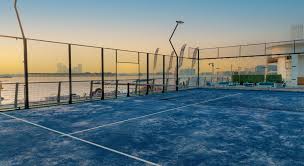

Understanding Squash Court Prices A Deep Dive into the Economics Behind the Facilities
Squash, a sport known for its high-intensity gameplay and cardiovascular benefits, has been gaining popularity worldwide. As more enthusiasts flock to the courts, the demand for high-quality squash facilities has surged. However, the price of constructing and maintaining squash courts can vary significantly based on various factors. This article aims to shed light on the pricing dynamics associated with squash court facilities and the factors that influence these costs.
The Cost of Construction
Building a squash court is a significant investment that can range from tens of thousands to several hundred thousand dollars. The initial cost is mainly influenced by the court’s design, materials, and the location where it is built.
1. Court Specifications Regulation squash courts must adhere to specific dimensions, including a length of 9.75 meters, a width of 6.4 meters, and a height of at least 4 meters. These standards necessitate specialized construction techniques and materials that ensure the court meets international standards set by the World Squash Federation (WSF).
2. Quality of Materials The type of materials used also significantly impacts the costs. High-quality flooring, wall materials, and glass back walls, which are essential for visibility and durability, can increase expenses. The choice between using traditional materials or advanced options, such as engineered wood or specialized glass, should also be considered in the budgeting process.
3. Location Real estate prices vary widely from one region to another, affecting the overall cost of construction. Urban areas with high demand for recreational facilities can see much higher costs than rural or suburban areas.
Maintenance and Operational Costs
Once a squash court is built, ongoing maintenance is critical to ensure the facility remains in excellent condition and continues to attract players.
1. Regular Upkeep Regular maintenance tasks include cleaning the court, refinishing the floor, and ensuring that all equipment, such as lighting and heating systems, is in good working order. Neglecting these tasks can lead to higher repair costs in the long term.

2. Utility Expenses Operating a squash court involves various utility costs, including water, electricity, and heating or air conditioning. Effective management of these utilities is crucial for maintaining affordability for both operators and users.
3. Staffing Costs Depending on the size and scope of the facility, staffing can also contribute to operational costs. This includes hiring coaches, maintenance staff, and administrative personnel to manage bookings and inquiries.
Pricing Models for Players
For squash players, the cost of using a squash court can vary significantly depending on several factors, including location, facility quality, and time of use.
1. Membership Fees Many sports clubs operate on a membership model, charging an annual or monthly fee that grants access to their facilities. These memberships can range from fully inclusive packages to pay-as-you-go options.
2. Pay-per-Play For those who do not wish to commit to a full membership, pay-per-play options are prevalent. This model allows players to reserve court time on an as-needed basis, typically at an hourly rate.
3. Group Programs Some facilities offer group play or lessons which can help spread the costs among participants. This can be an economical option for players looking to improve their skills and meet other squash enthusiasts.
Conclusion
Understanding the price dynamics of squash courts encompasses various aspects, from construction to maintenance and the pricing models available to players. The investment in a squash facility reflects the growing popularity of the sport and the excellence of the services provided. As interest in squash continues to rise, stakeholders must consider how to balance costs with access, ensuring that health-focused recreational sports remain available and appealing to a broad audience. By carefully evaluating these economic factors, clubs and players alike can make informed decisions that foster a vibrant squash community.
Premium Paddle Tennis Rackets for Every Court & Player
Premium Padel Courts: Expert Design & Installation Services
Premium Padel Courts: Panoramic Designs & Custom Builds
Premium Padel Court | Custom Designs & Quality Installation
Paddle Tennis Rackets: Unleash Power & Precision on Court
Best Paddle Tennis Rackets: Power, Control & Comfort